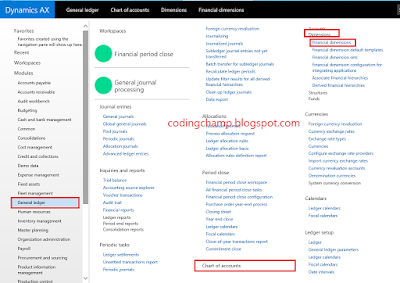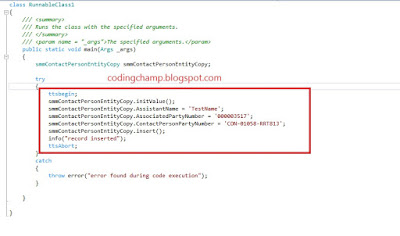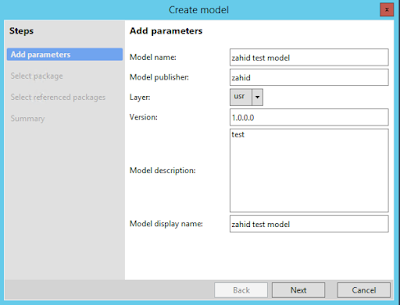Below is the X++ code snippet for getting the Financial Dimensions using Default Dimension by using X++ code:
private str getFinancialDimensionName(Name _dimAttrName, DimensionDefault _defaultDimension)
{
DimensionAttribute dimAttr;
DimensionAttributeValueSetStorage dimStorage;
DimensionAttributeValue dimAttrValue;
Common common;
DictTable dictTable;
select firstOnly dimAttr where dimAttr.Name == _dimAttrName;
if(dimAttr)
{
dimStorage = DimensionAttributeValueSetStorage::find(_defaultDimension);
select firstonly dimAttrValue
where dimAttrValue.RecId == dimStorage.getValueByDimensionAttribute(dimAttr.recID)
join dimAttr
where dimAttr.RecId == dimAttrValue.DimensionAttribute;
if (dimAttrValue)
{
dictTable = new DictTable(dimAttr.BackingEntityType);
common = dictTable.makeRecord();
if (common.TableId)
{
select common where common.(dimAttr.KeyAttribute) == dimAttrValue.EntityInstance;
return common.(dimAttr.NameAttribute);
}
}
}
}
Where _dimAttrName = name of the dimension attribute like Department, Location etc
and _defaultDimension = value of the defaultDimension like value in DefaultDimension field of table HcmEmployment.
Below is the code snippet to get the department and location in Sql using default dimension.
select
dimensionFinancialTag.description from
DefaultDimensionView
join
dimensionFinancialTag on dimensionFinancialTag.VALUE =
DefaultDimensionView.DISPLAYVALUE
where DefaultDimensionView.DefaultDimension
= 5637144783
and DefaultDimensionView.Name =
'Location'
select DisplayValue,
dimAttributeOMDepartment.NAME from defaultDimensionView
join dimAttributeOMDepartment
on dimAttributeOMDepartment.Value =
defaultDimensionView.DisplayValue
where
defaultDimensionView.DefaultDimension = 5637144783
and defaultDimensionView.name =
'Department'
For Any Question feel free to Comment.
Thanks,
Zahid












